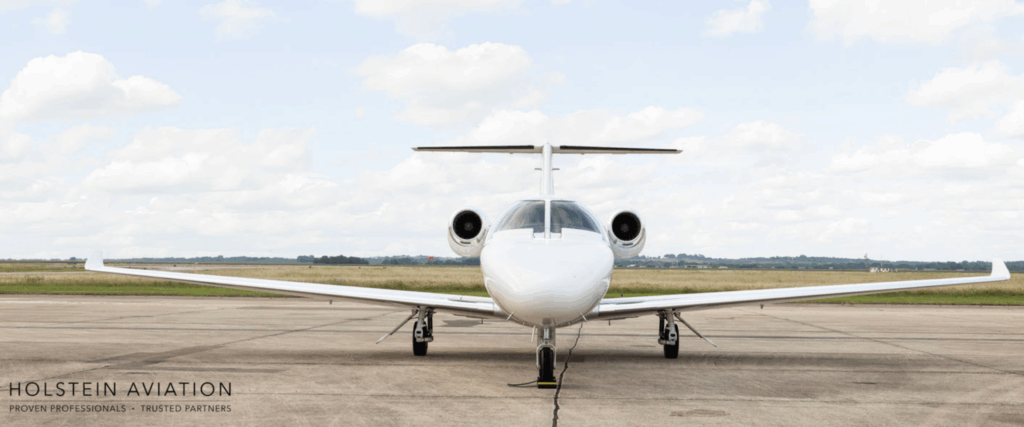When the ink is dry on your corporate aircraft transaction, the excitement of new ownership takes over. But before the first flight, a new owner’s most important job begins: establishing a robust maintenance regimen. Proactive, systematic maintenance is the single most critical factor in preserving your aircraft’s safety, reliability, and long-term value. Neglecting maintenance can lead to costly unscheduled repairs, downtime, and a significant drop in resale value. Here are seven essential maintenance best practices every new business aircraft owner should adopt.

1. TRANSFER OR ENROLL IN ENGINE AND AIRFRAME MAINTENANCE PROGRAMS
One of the most significant decisions a new owner makes is whether to transfer or enroll their aircraft in a maintenance program. These prepaid, hourly-rate programs effectively act as insurance for major components, protecting you from multi-million-dollar repair services.
- Engine programs: Covers scheduled maintenance, overhauls, and unscheduled repairs. This is arguably the most critical and can involve millions of dollars for major engine work.
- Airframe programs: Extend coverage beyond the engines to include systems like landing gear, hydraulics, and avionics, making operating costs more predictable.
2. PRIORITIZE PROACTIVE CORROSION
Corrosion is a silent and relentless threat, especially for aircraft operating in coastal or humid environments. A rigorous corrosion control program is key to preserving the aircraft’s structural integrity.
- Implement a strict cleaning schedule: Wash the aircraft regularly, especially after exposure to salt spray or humid conditions.
- Use corrosion inhibitors: Apply aviation-approved corrosion-inhibiting compounds and fluids to hard-to-reach areas to form a protective barrier.
- Maintain hangarage: Storing the aircraft in a temperature and humidity-controlled hangar significantly reduces corrosion risk.
3. DIGITALLY MANAGE YOUR MAINTENANCE RECORDS
Implementing a dedicated digital maintenance tracking system from the start provides significant advantages.
- Enhance compliance: A robust system tracks all Airworthiness Directives (ADs), Service Bulletins (SBs), and inspection intervals, ensuring your aircraft is always in compliance with FAA regulations.
- Improve resale value: A meticulously documented digital history is a major selling point for pre-owned business aircraft. It provides transparency and reassures future buyers that the aircraft has been well cared for.
4. ESTABLISH A STRONG MAINTENANCE PROVIDER RELATIONSHIP
Choosing the right maintenance, repair, and overhaul (MRO) facility is not a decision to take lightly.
- Select a facility with specific experience: Choose an MRO with extensive, recent experience working on your specific make and model.
5. FOLLOW A COMPREHENSIVE INSPECTION SCHEDULE
Beyond the mandatory FAA inspections, follow a manufacturer-recommended schedule to maximize reliability and safety.
- Utilize a maintenance tracking program: Platforms like CAMP (Computerized Aircraft Maintenance Program) or similar services track your aircraft’s usage and forecast maintenance requirements.
- Conduct routine inspections: Perform regular, detailed pre-flight and post-flight inspections to catch minor issues before they become major problems.

6. MONITOR YOUR AIRCRAFT’S OIL AND FLUID HEALTH
Engines and hydraulic systems are the lifeblood of your aircraft.
- Track oil analysis: Regular oil analysis can detect engine wear and identify potential issues long before they lead to failure.
- Maintain fluid levels: Monitor hydraulic fluid levels and quality. Proper fluid management is crucial for the safe and reliable operation of flight controls and landing gear.
7. A SOLID MANAGEMENT PLAN
A management plan is a strategic framework that outlines every aspect of your aircraft’s operation, from routine tasks to long-term financial forecasting. It can be handled by an in-house flight department or managed by a third-party aircraft management company. The plan encompasses several key components, ensuring that every detail, no matter how small, is meticulously handled.
Maintenance and Airworthiness
Proactive maintenance is the cornerstone of safety, reliability, and value retention. A detailed plan covers:
- Scheduled maintenance: Adherence to the manufacturer’s recommended service intervals, including engine programs and airframe checks.
- Inspection coordination: Scheduling and overseeing FAA-mandated inspections to ensure continuous airworthiness.
- Maintenance record tracking: Ensuring all maintenance records, logs, and inspections are meticulously documented for compliance and resale value.
Crew Management
A professional flight crew is essential for a safe and consistent flight experience. The management plan includes:
- Hiring and training: Recruiting highly qualified pilots and cabin attendants with the specific experience needed for your aircraft model.
- Scheduling and payroll: Managing crew schedules to avoid fatigue, handle payroll, and coordinate benefits.
- Standard operating procedures (SOPs): Ensuring the flight crew adheres to the highest safety and operational standards.
Financial Oversight and Budgeting
Controlling costs is crucial to a sustainable ownership experience. The financial plan provides:
- Cost tracking: Meticulously tracks variable costs (fuel, trip expenses) and fixed costs (salaries, hangar fees).
- Budgeting: Provides detailed financial reporting to give the owner clear visibility into all expenditures.
- Cost savings: Manages expenses through volume discounts on fuel, insurance, and maintenance services.
- Charter revenue offset: For owners who wish to offset the cost of ownership, the plan includes a strategy for generating revenue by chartering the aircraft when it’s not in use.
Regulatory Compliance
The aviation industry is a web of complex regulations. The plan ensures:
- FAA and ICAO compliance: Stays up-to-date with FAA and ICAO regulations for safety, training, and operational procedures, protecting the owner from legal penalties.
- Documentation management: Handles all the paperwork required for registration, certifications, and compliance audits.
- Tax considerations: Manages sales, use, and property tax compliance, ensuring the owner can navigate tax implications effectively.

At Holstein Aviation, our IADA certified professionals bring decades of transaction experience, real-time market intelligence and global reach. We guide our clients through every step of the process, ensuring confidence and clarity in today’s dynamic environment. If you are buying an aircraft, selling your aircraft, or need some guidance regarding maintenance best practices, Holstein Aviation is your trusted partner in business aviation.